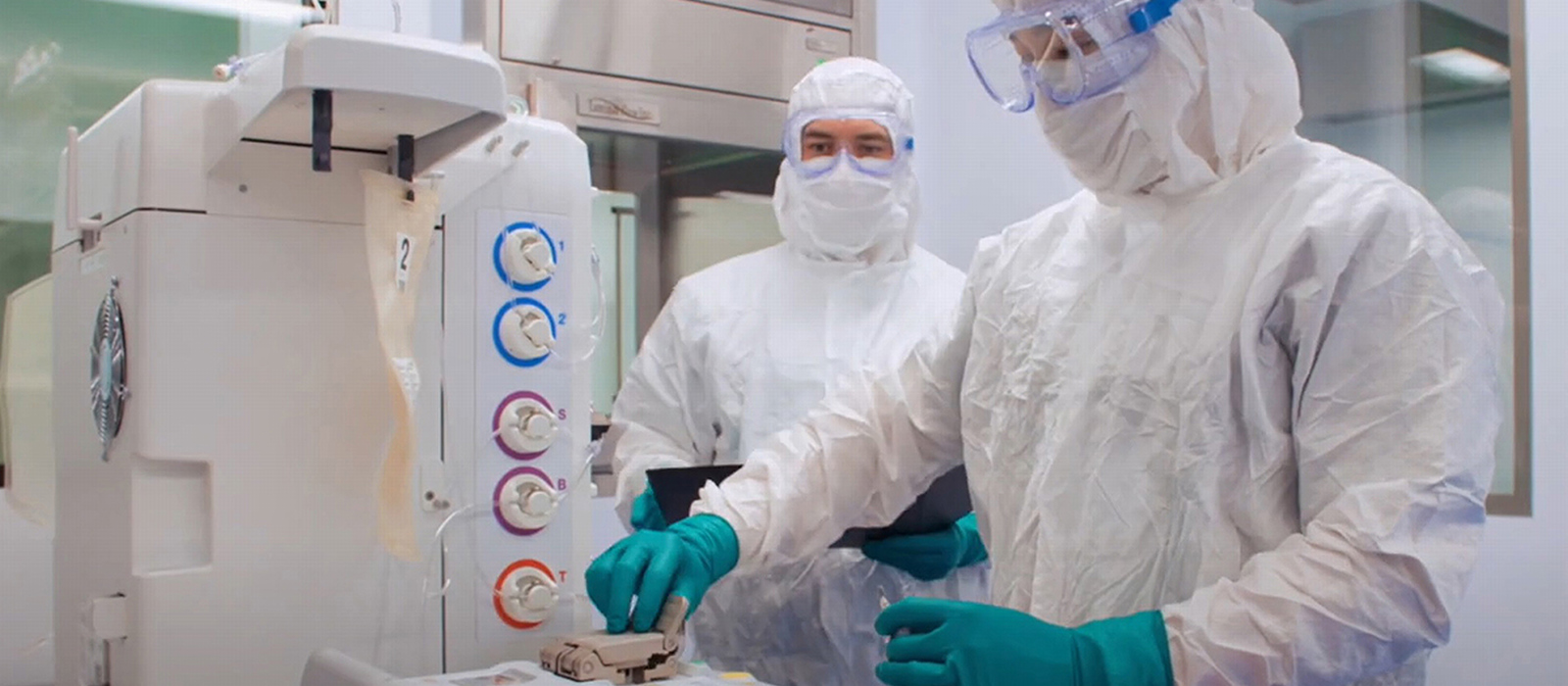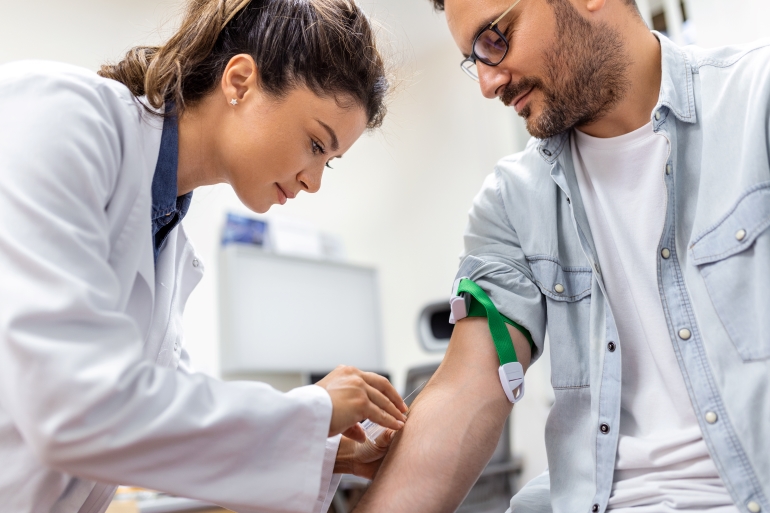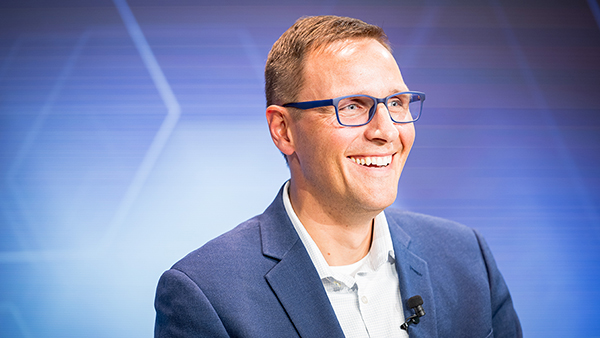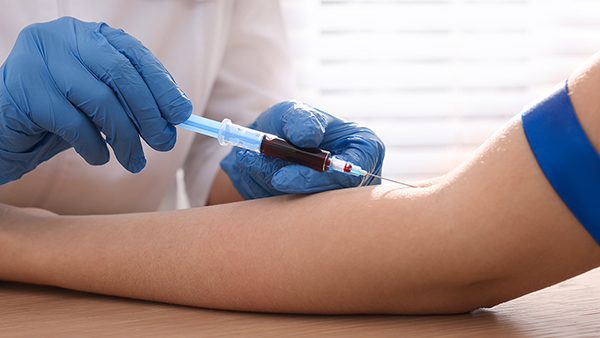

CAR-T cell therapy is one of the most innovative gene and cell therapies. In an interview with Fresenius editor Brigitte Baas, Chris Wegener, Director, CGT R&D, Research and Advanced Technologies, Transfusion and Cell Therapies at Fresenius Kabi USA, talks about the early days of device development for CAR-T cell therapy and how he sees the future of cell processing in the next five to ten years.
(Published: November 2024)
Chris, one can say, that you and your team at Fresenius Kabi USA are at the center of product development when it comes to devices for CAR-T cell therapy. How did all the research work on this new therapy method start?
Chris Wegener: The first-in-human clinical trials were conducted by researchers in general in 2011. That was, so to speak, the culmination point of a lot of pre-clinical work that had started already in the 1990s. The first commercial CAR-T approvals took place in 2017.
Please explain for our readers: How exactly did it come about that Fresenius Kabi became involved some time ago in the relatively new field of gene and cell therapy? For a long time, that wasn’t at the heart of our portfolio, was it?
Chris Wegener: We have to go back here a bit. And let me admit: We came to the field of cell and gene therapy quite by accident. Fresenius Kabi happened to have decades of experience in single-use tubing set design and manufacture and automation, whether for blood collection, for blood separation – known as apheresis – or for transfusion medicine. As it became apparent that the field of CGT was something that lacked the right tools, we wondered whether it was possible to use our components to support this growing need. This was because the automated tools we were developing at this time were capable of performing certain parts of the therapeutic workflows in CAR-T cell therapy: They are also equipped with disposable tubing sets and work in a similar way to an apheresis or dialysis machine.

And what happened next?
Chris Wegener: So, we quicky started to put our pumps, tubing, and valve technologies into a frame that would allow flexibility in use. Partially because we, also as new entrants into the world of CGT manufacturing, didn’t know how end users would want to leverage the system. Little did we know that this flexibility would be one of the primary reasons that people would adopt our platforms even today! It was precisely with this expertise that we were able to create the Lovo and Cue cell processing systems. We have simply applied our decades of experience in transfusion medicine and apheresis to cell and gene therapy.
The production of immune cells is very complex, and the production period often lasts a very long time. Why exactly is that so?
Chris Wegener: In most CAR-T processes, the actual production of the cells only takes about seven to nine days. However, since these are personalized medicines, each patient batch needs to undergo a substantial quality control (QC) analysis. These QC tests often take longer than the production itself.
And when the QC is complete, the patient also needs to be prepared for infusion, which may include a short round of chemotherapy. Only then, when both the patient and cells are ready and in the same location, can the cells be reinfused. This is why most CAR-T's have to be frozen at the end of their production process: The function of the cells has to be preserved until everything is ready for infusion.
What exactly are the roles of Lovo and Cue in the complex CAR-T cell production process, when the finished cell cultures for therapy are ultimately harvested out from the bioreactor? In other words, in which part of the production process are Lovo and Cue used?
Chris Wegener: At their core, Lovo and Cue use a special type of filter, better known as spinning membrane filters. They help to efficiently wash and concentrate cells. Washing and concentrating is a necessary step in many parts of a cell therapy production workflow. It may be used to remove blood contaminants from the patient’s starting material, such as platelets or plasma. Or when cells are harvested from a bioreactor, the fluid the cells are suspended in need to be exchanged from a nutrient-rich growth media into something appropriate for cryopreservation.
The Lovo and Cue processing systems have proven to be very effective for all these processes. Both systems do well because they were specifically designed to be simple to operate and gentle on the cells. It helps that Fresenius Kabi was one of the first companies on the market with a CGT-specific system. Prior to this, developers had to rely on “borrowed” technology that was neither fit for use nor easy to operate.
The Lovo system, for example, ensures a fully automatic and fast processing of the laboratory material. We can control every aspect of the process – over the entire production period. What’s more, it is so flexibly configurable that practitioners can use Lovo for a wide range of cell therapy processes. On top this, Lovo quickly accommodates large volumes.

And how can the special features of the Cue processing system best be summed up?
Chris Wegener: The Cue system was, as you might recall, developed later. It was meant to fill in some of the gaps in Lovo’s capabilities. Both systems use the same spinning membrane filtration technology, but Cue uses a proprietary pneumatic syringe pumping system that has much finer control over small fluid volumes. The Cue processing system is particularly suitable for use where volume control is important, like formulation.
As is well known, neither Lovo nor Cue can handle the entire production process alone. Please explain which other processes or systems need to be incorporated before and after.
Chris Wegener: There are three other primary systems that are also required to generate CAR-T cells. The first is called cell selection. Your body has many different types of immune cells, or white blood cells, including B cells, monocytes, macrophages, and T cells. You can’t make CAR-Ts without T-cells. This can be done by binding the T cells to a specially coated bead, often a magnetic one, and applying a magnetic force to physically “pull” the T cells away from the non-target cells.
Second is the act of gene modification. First-generation CAR-Ts use engineered viruses to infect the T cells so they can recognize new targets, like cancers. In this case, viruses are only used to get the genetic material into the cells, but there are some very interesting alternatives in development such as using mechanical “squeezing,” electric fields, or lipid nanoparticles to deliver genic cargoes. Finally, cells will need to be expanded or grown to sufficient cell doses, which may leverage an array of different types of small bioreactors.
Between all of these specialized steps, cells need to be prepared for the next, which is where the flexibility of Lovo and Cue shine and frequently find all kinds of applications. This whole production process is what is known as “modular processing”: Several different processes can be integrated as required.
If you look ahead to the next five or ten years, how do you think the future of cell processing for gene and cell therapy will look?
Chris Wegener: While the effectiveness of this new breed of medicines – the CAR-T cell therapies – has been outstanding, the challenges of production and cost have limited the number of patients treated. Experts estimate only 20 to 25 percent of eligible patients receive treatment. In the next five to ten years, I think the centralized manufacturing approach for many types of cell therapies will be supplemented with another system: One that can be further simplified and deployed at the point-of-care, meaning the bedside of the patient. Patients should expect a more local care journey, where their treatments are prescribed, manufactured, and administered at the healthcare facilities near where they live at an affordable price.
Contact
Fresenius Kabi AG
Else-Kröner-Straße 1
61352 Bad Homburg v.d.H
Germany
T +49 (0) 6172 686 0
communication@fresenius-kabi.com


